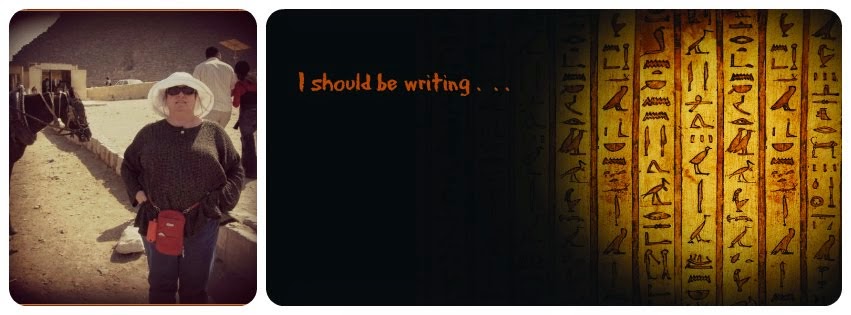The Latest Discoveries in Egyptology (May-July 2017)
Every few months, the Nile Scribes will bring you summaries of the latest ideas and discoveries in Egyptology, both from the field and the lab. We’ll introduce you to the newest archaeological finds or recently undusted manuscripts being rediscovered in museum collections, plus other theories stirring in the Egyptological Zeitgeist.
How Cleopatra’s Needle got to Central Park
It’s 70 feet tall, 220 tons and the city’s oldest artifact — but many New Yorkers don’t know it exists.
Cleopatra’s Needle, a 3,500-year-old obelisk from Ancient Egypt, survived a voyage to Central Park more than a century ago and has been a park treasure ever since.
Recording and rematerialising the Sarcophagus of Seti I and all the the tomb's scattered elements
SIR JOHN SOANE MUSEUM, LONDON
The photogrammetric recording of the sarcophagus of Seti I in Sir John Soane’s Museum in London was carried out between the 14th and the 19th March 2016 by Pedro Miró, Manuel Franquelo and Ferdinand Saumarez-Smith from the Factum Foundation for Digital Technology in Conservation. This initiative marks the first stage of the Theban Necropolis Preservation Initiative: a collaboration between the Ministry of Antiquities (Egypt), Factum Foundation for Digital Technology in Conservation (Spain), and the University of Basel (Switzerland), with contribution from Autodesk and Capturing Reality, and financial support by donation to the Factum Foundation.
The Great Pyramid of Giza is hiding mysterious chambers that could be about to reveal their secrets
Scientists prepare to search for 'recesses' lurking deep within this wonder of the ancient world.
Experts think they’re on the verge of solving a mystery hidden deep inside this awe-inspiring wonder of the ancient world.
- The Great Pyramid of Giza is hiding mysterious chambers that could be about to reveal their secrets
- Egyptologists go high tech to unlock ancient mysteries
Ancient Egyptian Pharaoh May Be the 1st Known 'Giant'
The supposed remains of Sa-Nakht, a pharaoh of ancient Egypt, may be the oldest known human giant, a new study finds.
Myths abound with stories of giants, from the frost and fire giants of Norse legends to the Titans who warred with the gods in ancient Greek mythology. However, giants are more than just myth; accelerated and excessive growth, a condition known as gigantism, can occur when the body generates too much growth hormone. This usually occurs because of a tumor on the pituitary gland of the brain.
Egyptologist to use 3D technology in documentation
Aliaa Ismail, 26, is the first Egyptian to work in the field of 3D scanning of Egyptian heritage at the tomb of Seti I in the Valley of the Kings in Luxor.
She holds two majors in Egyptology and Architectural Engineering from the American University in Cairo, and she graduated and started her career at the Factum Arte dedicated to digital mediation, both in the production of facsimiles and works of contemporary artists.
Ancient Egypt like you’ve never seen it before: 20 Rare Images of the Land of the Pharaohs
Here is your chance to go back in time with us and see Ancient Egypt like you’ve never imagined before.
The history of Ancient Egypt is one of the most extensive on planet Earth. From the beauties of the River Nile to the countless ancient temples and pyramids built across the Land of the Pharaohs, Ancient Egypt is definitely one of the most magical places on our planet.
The discovery of Nefertiti in Tell el-Amarna
“Really wonderful work. No use describing it, you have to see it!”
Between 1911 and 1914, excavations on behalf of the German Orient Society (Deutsche Orient-Gesellschaft - DOG) took place in the Egyptian city of Tell el-Amarna. They were directed by the German archaeologist and building researcher Ludwig Borchardt, since 1907 Director of the Imperial Institute for Egyptian Archaeology in Cairo. In the course of several campaigns, numerous objects dating to the Amarna period were discovered and documented in diaries and lists of finds (also in the form of sketches, aquarelles and photographies). The structure of the city of Amarna, particularly of the homes, was registered by Borchardt in great detail.
Pictures of the week

John White Alexander, an American portrait, figure, and decorative painter and illustrator dressed as an Egyptian mummy at the Autumn Fair in Onteora, New York, 1903. Photographer: C. O. Bickelmann [Archives of American Art, Smithsonian Institution.]











No comments:
Post a Comment
Note: Only a member of this blog may post a comment.